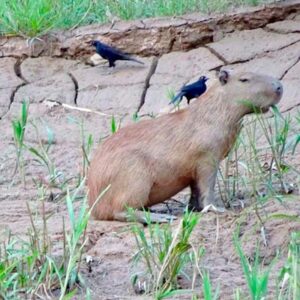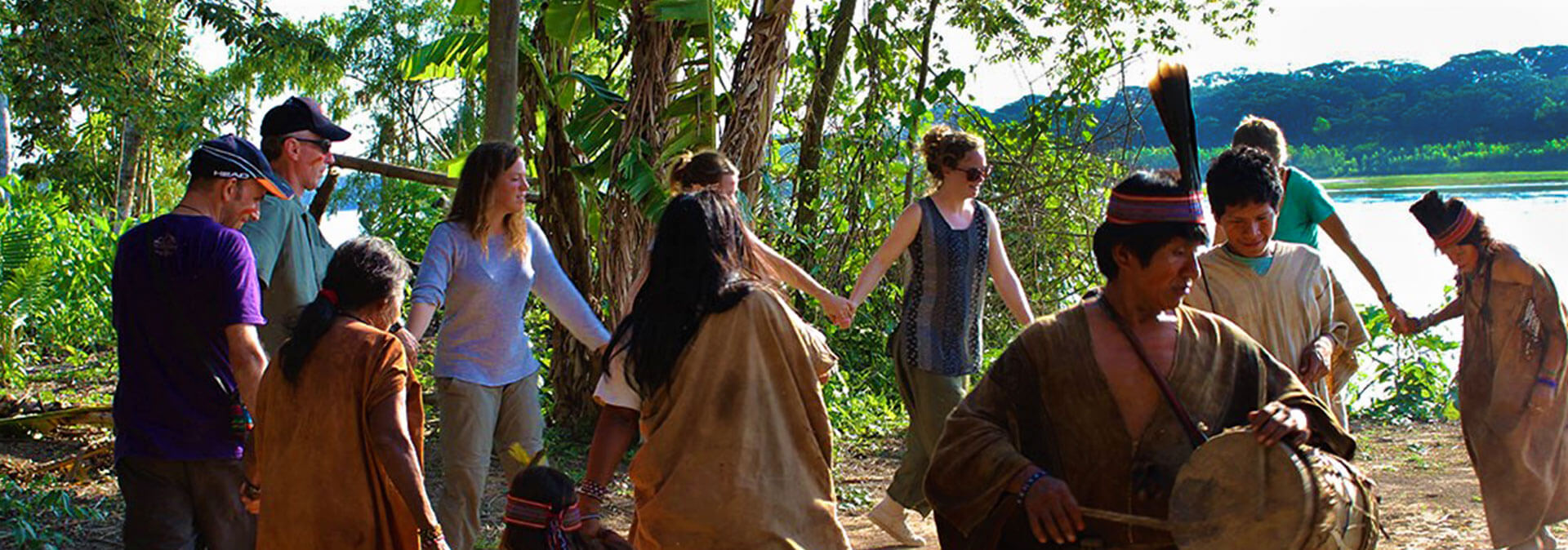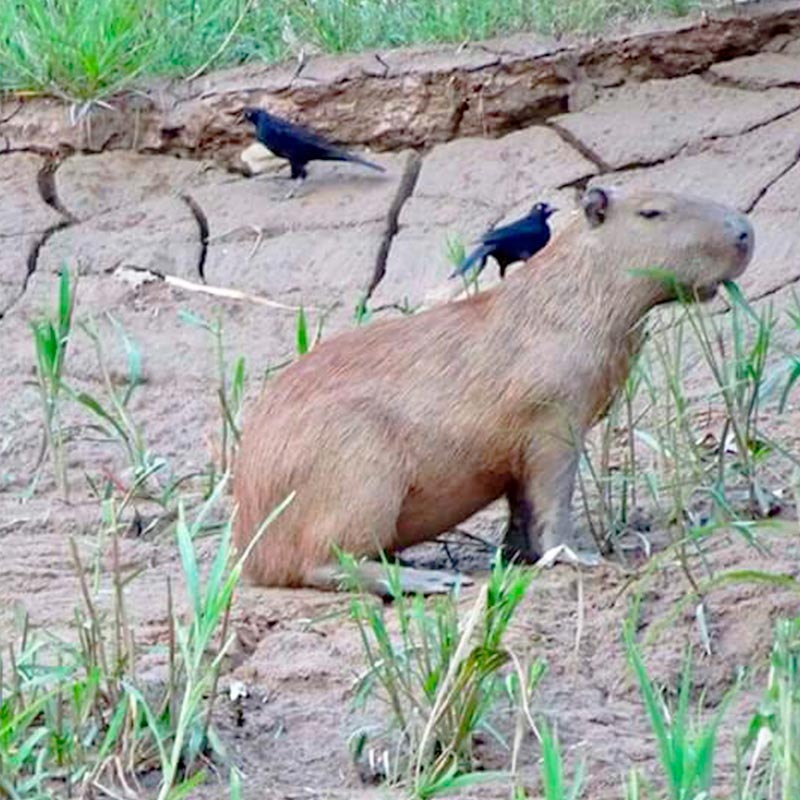Capibara (RONSOCO)
Ronsoco, chigüire or chigüiro2 (Hydrochoerus hydrochaeris) is an animal of the cavidae family. It is the largest and heaviest living rodent in the world. It is related to agoutis, chinchillas, coypu and guinea pig.
One of its common names, “capybara”, comes from the Guarani kapiÿvá,4 meaning ‘lord of the grass’.5 Its scientific name hydrochaeris, means ‘water pig’ in Greek.3

CAPIBARA – TAMBOPATA PERU
An adult Hydrochoerus hydrochaeris.
It has a heavy barrel-shaped body and a small head, with reddish-brown fur on the upper body that turns yellow-brown underneath. They can grow up to 1.30 m long and weigh up to 65 kg. They have slightly webbed feet, virtually no tail and 20 teeth. Its hind legs are slightly longer than the front legs, and the muzzles are blunt, with the eyes, nostrils and ears on the top of the head. Females are slightly heavier than males.
Body and coat
The body, which lacks a tail, is massive and round in shape, with a thick trunk and four short legs. The front legs have four toes and the hind legs have three toes. The toes are thick and similar. Capybaras reach a length of 1 to 1.30 m and a height at the back of 50 to 60 cm, and females are usually slightly larger than males. The average weight is 50 kg for males and 61 kg for females; however, the actual weight can vary between 27 and 65 kg.




